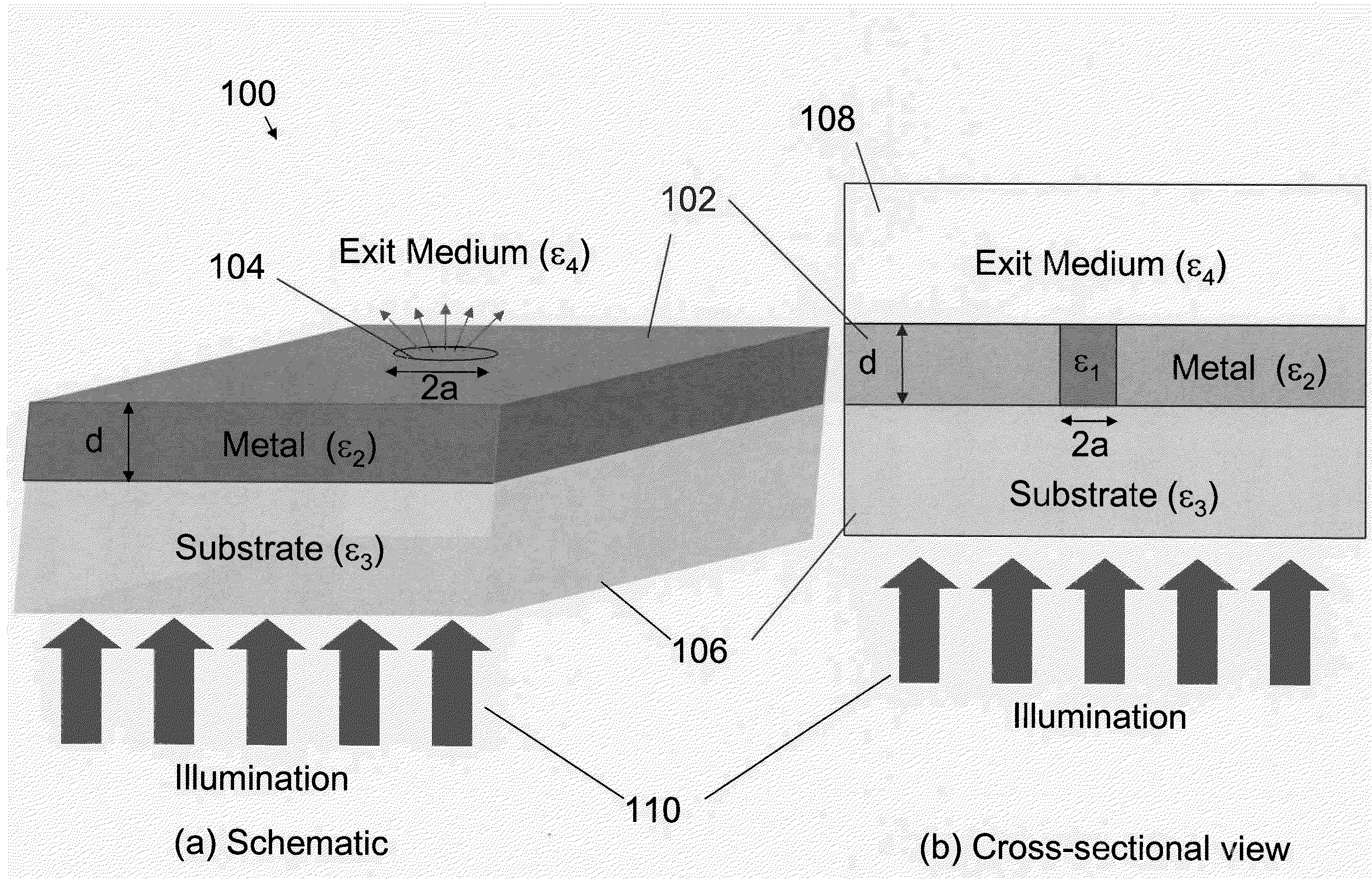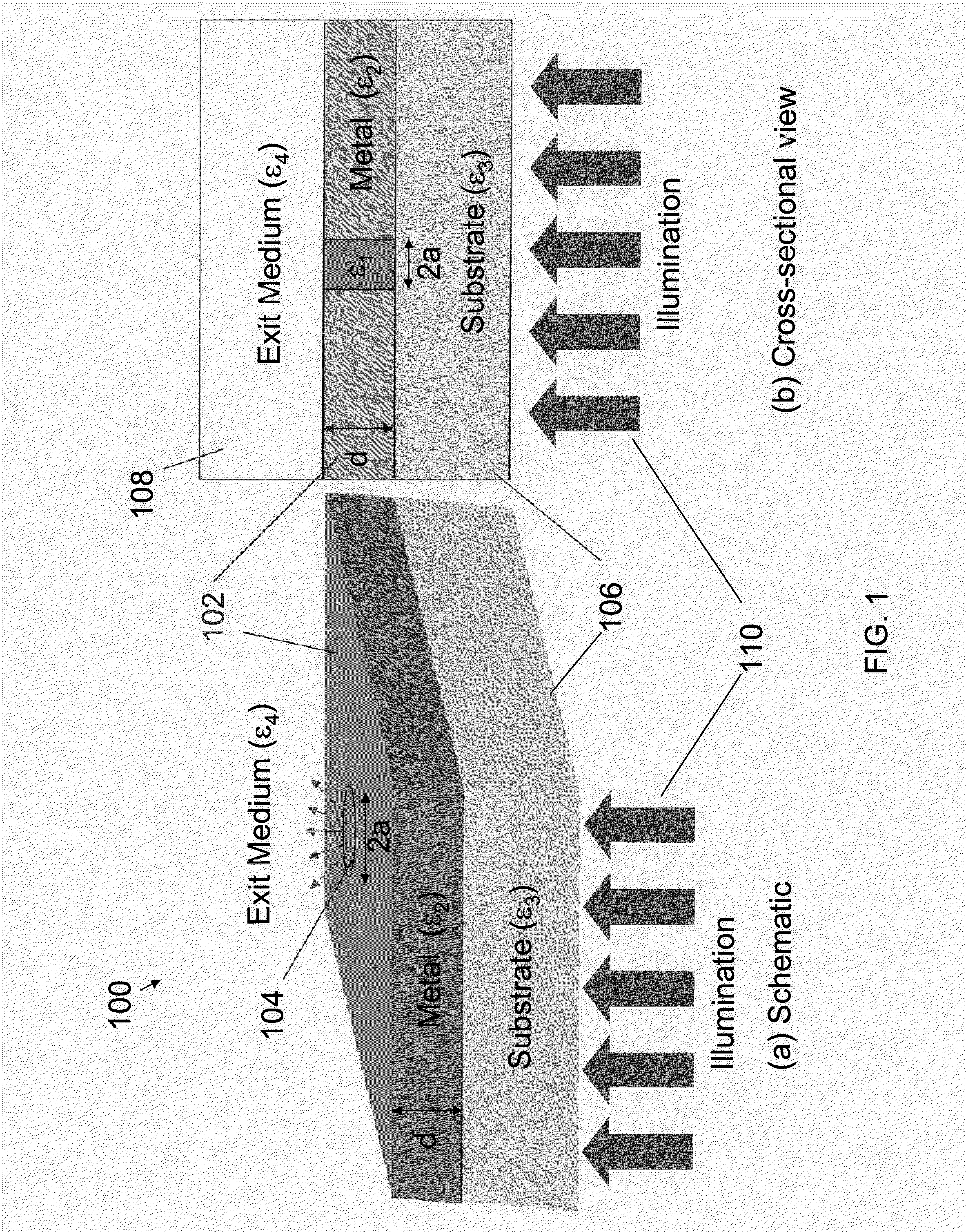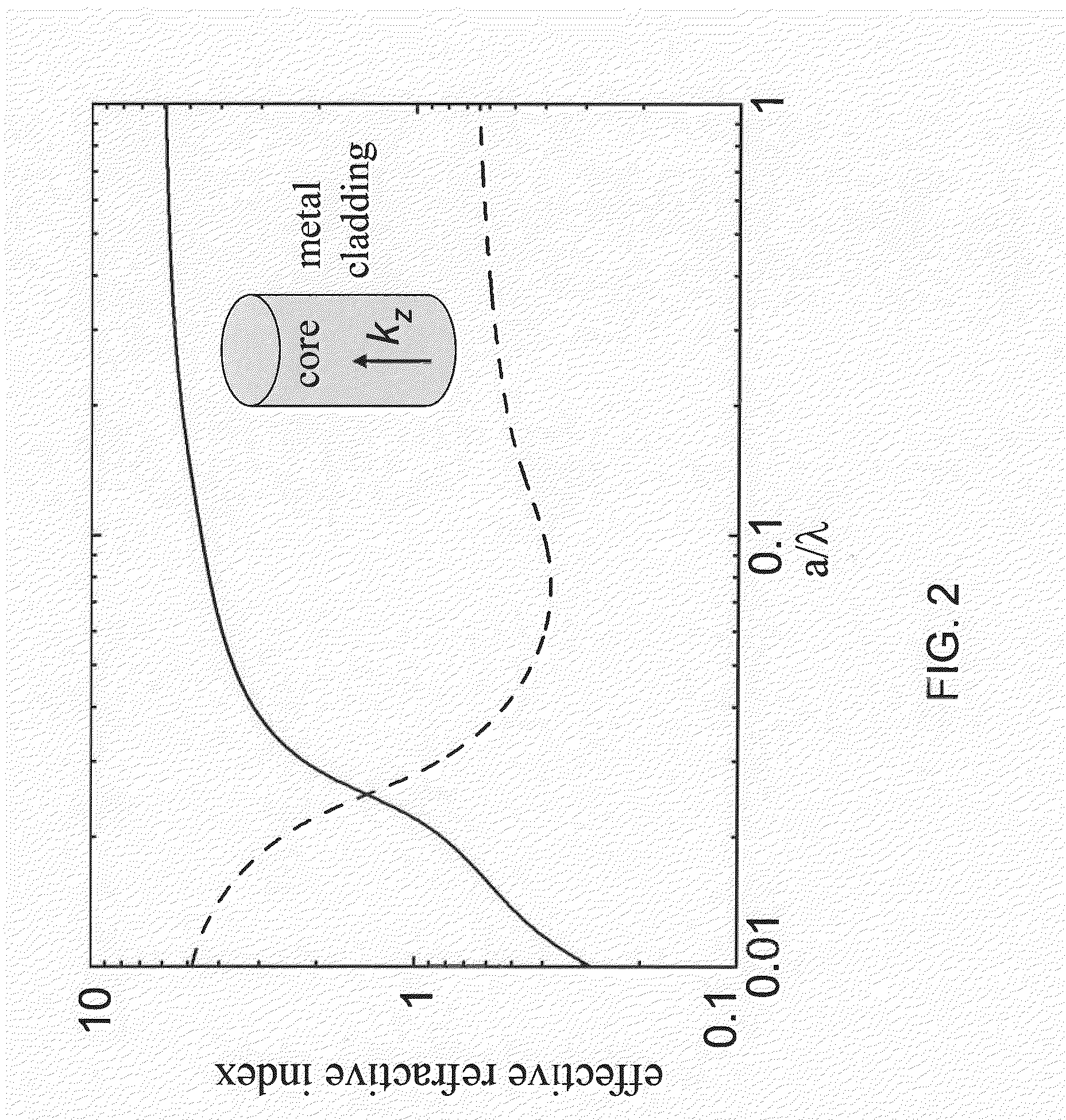Extraordinary light transmission apparatus and method
a technology of light transmission apparatus and light transmission method, applied in the field of optical instruments, can solve the problem of low transmission rate, achieve the effect of enhancing (extraordinary) light transmission and transmission through a sub-wavelength aperture of finite depth
- Summary
- Abstract
- Description
- Claims
- Application Information
AI Technical Summary
Benefits of technology
Problems solved by technology
Method used
Image
Examples
Embodiment Construction
[0019]Reference will now be made in detail to the present exemplary embodiments of the invention, non-limiting examples of which are illustrated in the accompanying drawings. Wherever possible, the same reference numbers will be used throughout the drawings to refer to the same or like parts.
[0020]The metallic cladding material component of the invention disclosed herein is intended to be a “real metal,” which means a metal material having a complex dielectric constant whose real part is a finite negative number, in contrast to “a perfectly conducting metal” where the metal's conductivity is assumed (e.g., by physicists) for simplicity to be infinite. For example, at wavelength 810 nm, gold has a dielectric constant of −24.89+1.57i. Thus the conductivity of a ‘real metal’ is always finite; i.e., no metal is a perfect conductor. As a result of finite conductivity, electric fields can penetrate into metals and exist in a thin layer beneath the metal surface.
[0021]As used herein and as...
PUM
| Property | Measurement | Unit |
|---|---|---|
| thickness | aaaaa | aaaaa |
| thick | aaaaa | aaaaa |
| diameter | aaaaa | aaaaa |
Abstract
Description
Claims
Application Information
 Login to View More
Login to View More - R&D
- Intellectual Property
- Life Sciences
- Materials
- Tech Scout
- Unparalleled Data Quality
- Higher Quality Content
- 60% Fewer Hallucinations
Browse by: Latest US Patents, China's latest patents, Technical Efficacy Thesaurus, Application Domain, Technology Topic, Popular Technical Reports.
© 2025 PatSnap. All rights reserved.Legal|Privacy policy|Modern Slavery Act Transparency Statement|Sitemap|About US| Contact US: help@patsnap.com



